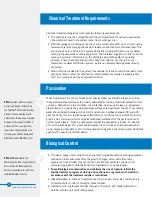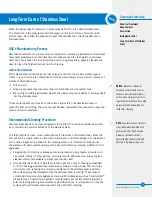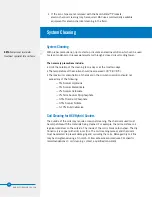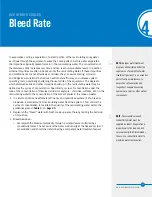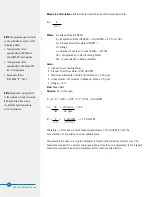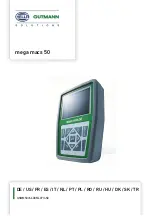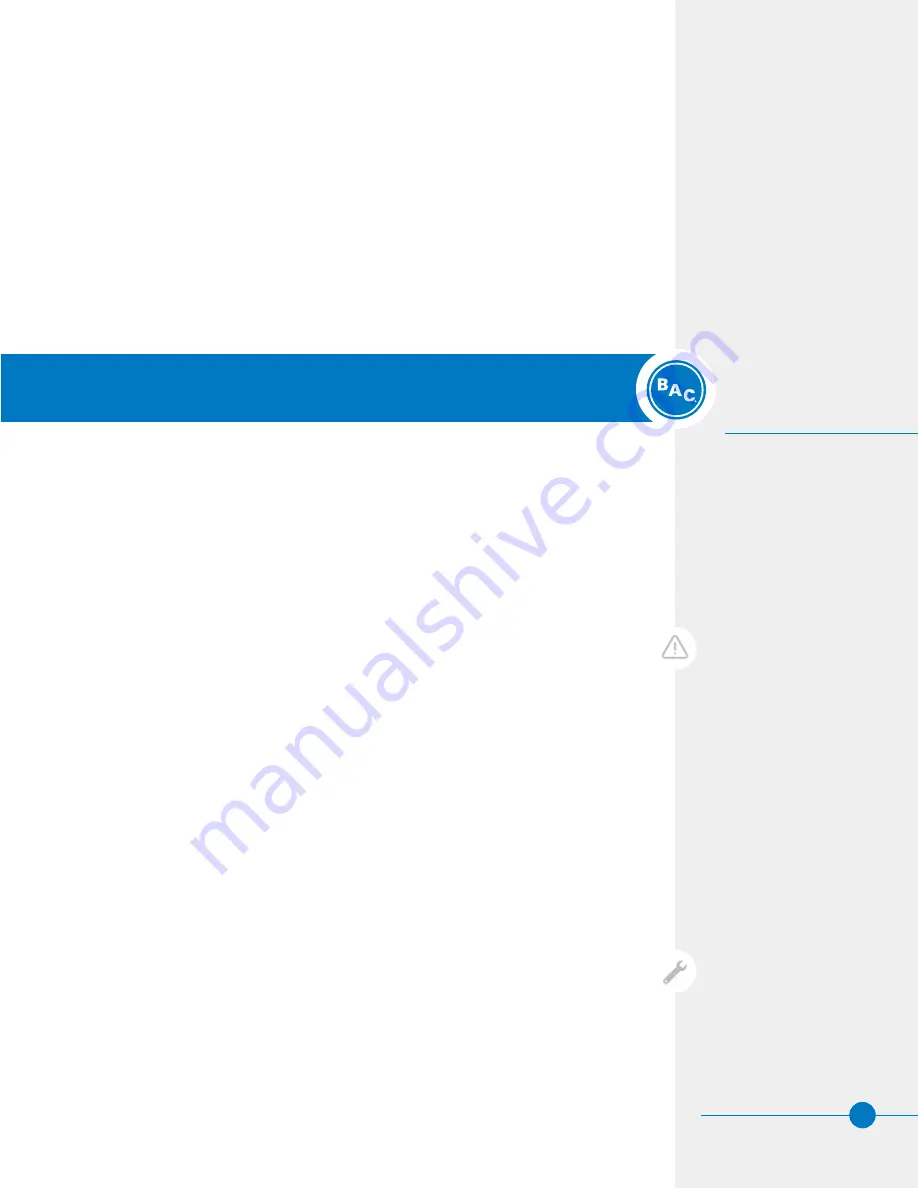
13
13
Fan
HXV units use axial fan(s). Thoroughly inspect the fan(s) for damaged or deteriorated fan
blades and replace the fan(s) if necessary.
Inspection & Maintenance
• If the unit is already in operation, while the fan is running, check for any unusual
noises or vibrations.
• With the fan off and the motor disconnected, locked out, and tagged out, check the
general condition of the fan:
– Inspect for any loose or missing bolts in the fan shaft bushing, the fan hub, and the
fan shaft bearing(s).
– Check the fan blades for looseness, first by twisting the blade by hand, and then by
moving the blade tip up and down. There should be no play or slippage.
– Inspect each blade for excessive scale build-up that could cause vibration.
– Check each blade in the area of the shank for cracks. If cracks are found, the fan
motor should be locked out of service until the fan is replaced. Contact BAC for
assistance.
•
Tip Clearance:
Check the clearance between the tip of the blade and the fan cowl. The
clearance should be within 5/16” to 1/2”.
•
Blade Pitch:
Check to ensure that the blades are all at the same pitch. If uncertain,
measure the pitch with an inclinometer. All blades should be within 1/2° of each
other.
•
Rotation:
Turn the fan by hand to ensure that it moves freely with no rough spots,
binding or other malfunctions that could cause vibration or fan motor overload. While
rotating the fan, check the blade tracking. All blades should track within a 1” band at
any single point around the cowl.
•
Direction of Rotation:
On initial start-up, or if the fan motor has been rewired, briefly
energize the fan motor and note the direction of rotation. It should rotate in the
direction indicated by the arrow on the fan cowl. On units with independent fan
motors, check the rotation of each fan.
•
Operation:
On initial start-up, run the fan in the manual position for several minutes
and check for any unusual noises or vibration.
NOTICE:
Ensure the controls for
the fan and pump motors are set
to allow a maximum of six on-off
cycles per hour to prevent motor
overheating.
Detailed Component
Maintenance
Procedures
Cold Water Basin
Water Levels
Inspection & Maintenance
Fan
Inspection & Maintenance
DANGER:
Rotating equipment
will cause severe personal injury
or death to persons who come in
contact. Do not perform any service,
maintenance, or inspection on or
near the fans, motors, and drives,
or inside the unit without first
ensuring that the fans and pump
motors are disconnected, locked
out, and tagged out.
Inspection & Maintenance
• At least quarterly inspect the cold water basin, and remove any trash or debris
accumulated in basin or on the strainer. If sediment has accumulated in the cold
water basin, drain, clean and flush the cold water basin with fresh water. This will
remove sediment which can collect in the basin during operation. If not removed,
sediment can become corrosive and cause deterioration of the protective finish of
metallic basins.
– When flushing the basin, leave the strainer in place to prevent the debris from re-
entering the system.
– Remove the strainer after the basin has been flushed.
– Clean and replace the strainer before refilling the basin with fresh water.
• Adjust the float to maintain the design operating level. See
Table 2.


























